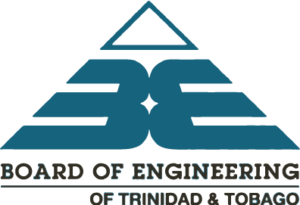Mildred Boneo, BSc., MSc.
A Chat with Mildred Boneo, the Young Research Engineer Mapping a New Path for Port of Spain’s Transit System
APETT ATC2024 Technical Conference held on 14-15 May 2024, HYATT Regency Hotel, Port of Spain, Trinidad, saw the emergence of a number of young engineer-researchers making presentations of their impressive and valuable research work. Mildred Boneo was another one of those young engineer-presenters. Based on her MSc research project, the title of her presentation was “Mapping and Analysis of Port of Spain Public Transportation System”
Mildred’s research outlines the development and analysis of a Port of Spain public transport map, which delineates the POS taxi, maxi-taxi and PTSC routes. She developed a map which would be a useful tool to inform decision makers about the coverage gaps that affect people’s choice of transport modes. It was created using a combination of Global Position System (GPS) tracking and discussions with transport operators, and frequent users of the system. The objective of her research was to examine the current public transportation routes in Port of Spain which offers a range of public transport options including, taxis, maxi-taxis, Public Transport Service Corporation (PTSC) buses and Transportation Network Company (TNC) ride-hailing services with the view to facilitate the integration of transportation services and thus enhanced travellers’ navigation through the network.
Q1. Can you tell us a bit about your background and what inspired you to pursue the specific research topic you presented at APETT’s ATC 2024 technical conference?
I am currently a Structural Engineer II at Massy Wood Group. I have worked in the construction industry for eight years. My primary area of experience is in the structural design of residential, commercial, and industrial structures. Given this, my interest in transport engineering comes as a surprise to many.
While travelling through Port of Spain daily as a young professional, I recognized the need for information on public transport routes. I attended Dr Trevor Townsend’s Advanced Transport Engineering course while pursuing my MSc. in Civil Engineering at the University of the West Indies (UWI). This course covered concepts such as transport policies, transport advancement and transport modelling and design. These two experiences influenced my decision to pursue research in the mapping and analysis of the POS transportation network. I recognized the need for information on public transportation routes so that commuters could understand the options available and the routes taken by each transport mode.
Q2. Can you give us an overview of the key points of your presentation?
In my presentation, I explained how I mapped and examined the spatial arrangement of the Port of Spain public transportation routes. The process for gathering, documenting, and mapping each maxi-taxi, taxi and Public Transportation Service Corporation (PTSC) bus route was described in the presentation.
The Port of Spain public transportation system faces two major accessibility challenges. Firstly, there is little to no information regarding the available public transportation routes. Consequently, travellers rely on word of mouth for this information. Secondly, the routes are planned separately. This does not allow for the integration of transportation services and hinders the potential for public transportation to be a feasible alternative to private transportation options. My research was conducted with these challenges in mind. It aimed to capture the Port of Spain public transportation system in a way that: (1) travellers could understand their available public transportation options and (2) planners could use it to assess the adequacy of the existing system.
Through my research, I developed maps that illustrate the routes taken by each public transportation mode (maxi-taxis, taxis, Public Transportation Service Corporation (PTSC) buses) within Port of Spain. These maps were used to access coverage of each route and determine the walkability of the public transport stands.
Q3. How did you decide on the methods and techniques you used in your research?
A review of existing literature guided the methods used to develop my research. Particularly, the Digital Matatus project, based in Nairobi, Kenya demonstrated how cell phones could be used to collect transit data. This strategy was adopted during the data collection stage of the research. I boarded taxis in Port of Spain and used a GPS mobile application to track each taxi’s movement along assigned routes.
Q4. What were some unexpected findings or results that emerged during your study?
While examining the maps created, I noted that some areas of Port of Spain are not covered by any of the public transport routes. These areas include Panka Street in St James and Serpentine Road in St. Clair. This encourages the presence of unregulated taxis in these areas.
Q5. What feedback did you receive from the audience at the conference and how has it influenced your work moving forward?
The audience reiterated the importance of this research and that a public transportation map would be useful to them. They also inquired about the steps required to roll out the maps to the public. The audience’s eagerness to see the map in the public domain ignited my motivation to make the map available to the public.
Q6. Did you collaborate with other researchers or institutions on this project? If so, how did these collaborations shape your research?
This research was completed in 2020 as part of my MSc. Research project at the University of the West Indies, St. Augustine campus. I met frequently with my research supervisor, Dr. Trevor Townsend. His guidance and feedback influenced me to ensure that the research problem was clearly defined. He also assisted me in ensuring each aspect of the research intentionally addressed the research objectives. I greatly appreciate the time he took to check in and monitor my progress. This helped me significantly during the COVID-19 pandemic.
Q7. What are the next steps for your research following the APETT conference presentation?
I am editing a paper I wrote on this research for publication in the special edition of the Journal of the Association of Professional Engineers of Trinidad and Tobago (JAPETT).
My goal is to make the map available to the public. This will, in my opinion, enable regular and infrequent travellers to confidently navigate the Port of Spain public transportation network. Small focus groups comprising travellers and transportation operators should ideally see these maps before they are released. The feedback from this exercise will confirm if the map can be easily interpreted. After this is achieved, similar exercises should be conducted in other urban areas such as San Fernando, Arima, Sangre Grande etc.
Q8. What was the most rewarding part of presenting at the conference?
The opportunity to present in person rewarded me in many ways. For me, engaging with the audience and learning about their travel experiences and perspectives on navigating public transportation was the most memorable part of my experience. Understanding user needs, views and experiences is essential for effective transport design. Thus, it was very appreciated to have the opportunity to hear from potential users of the Port of Spain transportation network.
Q9. How do you balance your research with other professional and personal commitments?
Completion of my research while working full-time took a lot of preparation and time management. I developed a list that outlined all the tasks required to complete the research as well as a time estimate to finish each activity. Thanks to this, I could make good use of my weekday nights after work and weekends.
Q10. What advice would you give to other young engineers who are interested in pursuing engineering research
I implore prospective engineering researchers to get in touch with experienced professionals in their areas of interest to exchange ideas, expand their knowledge and ask any questions about a topic they may be interested in. These professionals can offer recommendations for improving the scope of your research or advise on whether a topic is worthwhile to pursue.
I also highly recommend attending any academic writing or research methods workshops. This will assist with clearly communicating ideas, findings and recommendations to the target audience. While I was a student at the UWI, I participated in a writing boot camp facilitated by the Department of Engineering. The presenters provided samples of effective and ineffective academic writing to demonstrate techniques to write clearly and concisely. I also learnt about the available referencing tools that can be used to catalogue and cite references during the research process.
Q11. Were there any other presentations or research at the conference that particularly inspired you?
The “Successful Engineering Project Management of the Demolition of an Industrial Plant in a Capital City” was particularly intriguing to me. This presentation allowed me to see how the PowerGen Port of Spain facility was safely demolished while focusing on the health and safety of all workers throughout the process. This helped me to understand the considerations required for the decommissioning of an industrial facility such as waste disposal, air monitoring, and structural analysis (of phased demolition). This was also inspiring to see the capabilities of the local industry.
Eng. Dass’s presentation on “Redefining Curepe Junction Based on User Perception” also demonstrated the potential of Curepe Junction to be a hub that encourages movement and enjoyment of the area.
Q12. You are a practicing structural engineer with an interest in transport engineering, so how does your current research fit into your engineering aspirations?
My exposure to the fundamentals of transport planning and design has deepened my appreciation of human behaviour and its influence on developing useful designs. In my role as a structural engineer, this has allowed me to continuously think about user safety during the transport, construction, and use of my designs.


